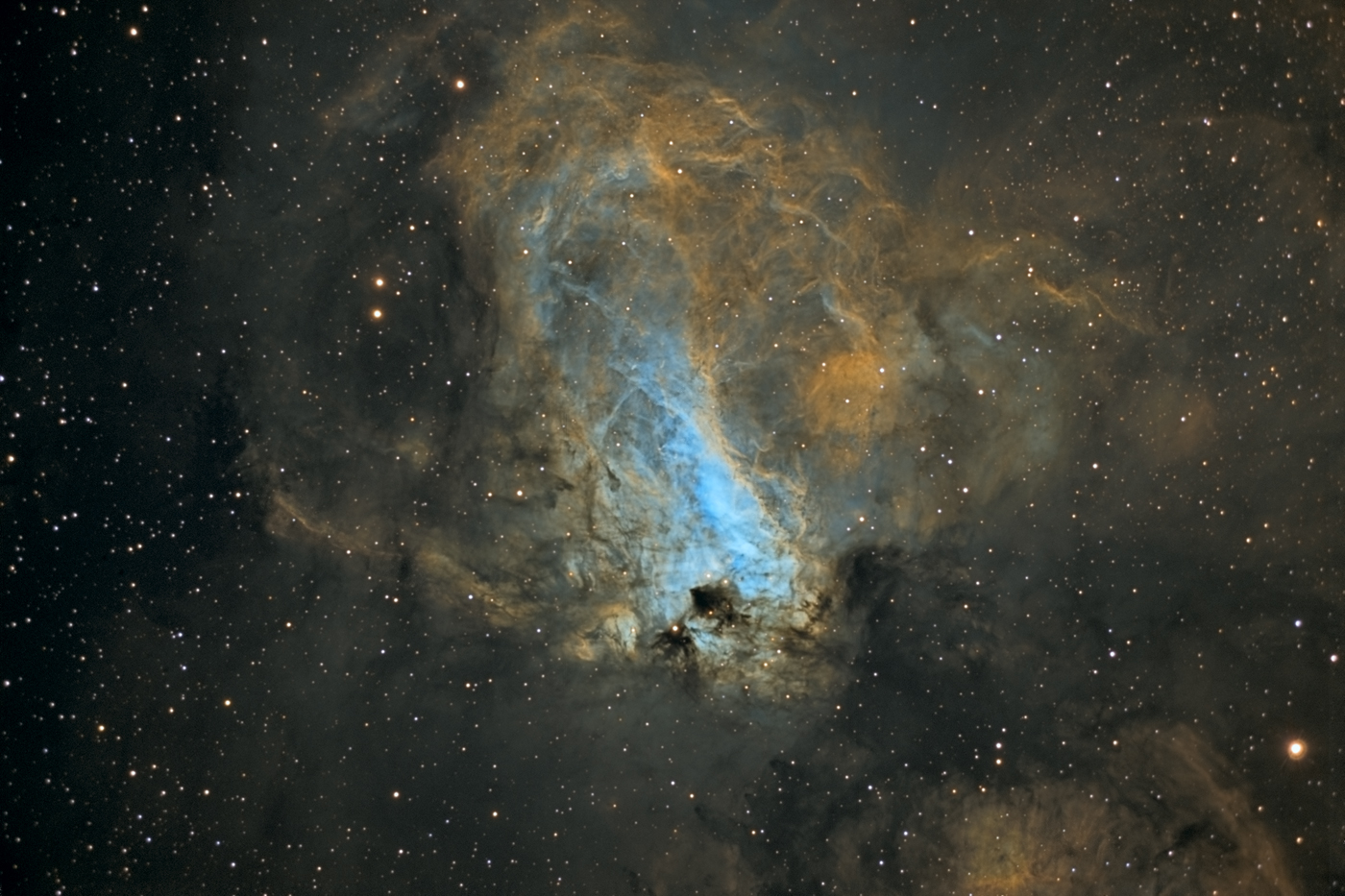
Optics/mount : 12″ACF 2.7m AP-Reduzer Alt-5
Camera/filters: Atik 11002 AstrodonHa/OIII/SII
Exposure:32×600 Ha, 14×600 OIII/SII all 2bin
25-26 Juin 2015
The Omega Nebula, also known as the Swan Nebula, Checkmark Nebula, and the Horseshoe Nebula (catalogued as Messier 17 or M17 and as NGC 6618) is an H II region in the constellation Sagittarius. It was discovered by Philippe Loys de Chéseaux in 1745. Charles Messier catalogued it in 1764. It is located in the rich starfields of the Sagittarius area of the Milky Way.
The Omega Nebula is between 5,000 and 6,000 light-years from Earth and it spans some 15 light-years in diameter. The cloud of interstellar matter of which this nebula is a part is roughly 40 light-years in diameter and has a mass of 30,000 solar masses. The total mass of the Omega Nebula is an estimated 800 solar masses.
It is considered one of the brightest and most massive star-forming regions of our galaxy. Its local geometry is similar to the Orion Nebula except that it is viewed edge-on rather than face-on. @Wiki
M17, également connue sous les noms de nébuleuse Oméga, du Cygne, du Fer à Cheval ou du Homard, est une nébuleuse en émission située à environ 5 500 années-lumière de la Terre dans la constellation du Sagittaire et a un diamètre de 15 années-lumière1.
D’une quarantaine d’années-lumière d’envergure, la nébuleuse doit sa luminosité à des étoiles jeunes de type B qui irradient le gaz alentour, créant ainsi une région HII. La couleur rouge de la nébuleuse est d’ailleurs celle de l’hydrogène ionisé.
Au sein de la nébuleuse se trouverait un amas ouvert constitué d’une trentaine d’étoiles masquées par la nébuleuse.
En infrarouge, on a pu y observer une quantité importante de poussières favorables à la formation d’étoiles. @wiki